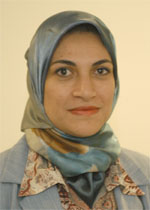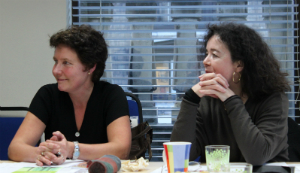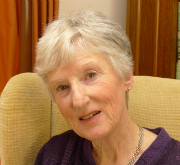
by Joan Rapaport
Professor Jill Manthorpe: Addressing ‘invisible’ inequalities in social care – Why now?
In her opening comments, Professor Manthorpe described an ‘elastic’ Eurovision definition of ‘White Other’ which included non-EU and EU nationals who were also often defined as White Other as well as the more frequently cited migrants from Canada, USA and Australia. As usual, she noted, London is a hotbed of change. The backgrounds of ‘White Other’ people are extremely diverse, with huge implications for appropriate social care provision. However, although the Equality Act 2010 is now in force, the needs of this population group as they age have not been explored. Professor Manthorpe acknowledged the challenges faced by busy social workers and the constraints of assessment forms but asked:
- How can appropriate services be provided if vital biographies and life stories have not been recorded?
- What happens to people with memory problems or whose speech is impaired after a stroke – who provides the life experience to inform the care plan?
- How can we help people to recall their memories and help care staff to see the person behind the care plan, so that social care truly reflects their needs?
Professor Karen Christensen: Older Scandinavians in London – how do they fare?
Professor Christensen identified the longstanding historical connections between Norway and Britain. Norway’s population is small (5 million) and scattered amongst 429 municipalities. It is difficult to find out the exact numbers of Norwegians living in the UK today, as the government figures are workforce related.
Her recent and unique life course interviews of seven Norwegians living in London, ages ranging from 59 – 75, revealed that these women came to London for love and marriage, au pair work, freedom from close knit communities and disappointment about Norwegian welfare services. Their passage was made easier because their fathers had encouraged them to learn English, as a ‘useful’ language. Those who had trodden the au pair and marriage route had stayed for family reasons and had chosen part-time work to suit. Others, who had come for career reasons and later married here, had made their decision to stay right from the start. These women juggled their careers with family responsibilities and worked until retirement. None had come ‘to get a better life’ in the traditional migrant sense.
Only one, married to a black man, had faced discrimination. Although settled in Britain, none wanted to become British citizens. They had all their rights, bar the right to vote. Professor Christensen considered that if there had been the option of dual nationality, their decisions might have been different. However, they could keep in touch with their Norwegian culture through their community networks and work and telling their grandchildren about Norway. There was also the Norwegian ‘injection’ of the holiday cottage – but then straight back to Britain! These women had no fear of getting old in Britain, as long as they could avoid residential care. They hoped for help from their families in return for caring for grandchildren. Those who had worked for Norwegian agencies received higher pensions than their British counterparts. They could thus afford private care.
Dr Shereen Hussein: Older Turkish migrants’ care needs in the UK: cultural encounters and unmet needs – how do these compare?
Dr Hussein identified three distinct Turkish population groups: Turks, Alevi/Kurds and Turkish Cypriots living in the UK, sometimes referred to as ‘invisible minorities’. Although separate in their homeland, ethnic divisions are less apparent over here. However, each group has different ethnic histories. Old age is taking some by surprise.
With a Turkish colleague, Dr Hussein has been interviewing older Turkish men and women (ages ranging from 55 – 102) as well as Turkish care and community care workers. These interviews were conducted in Turkish (crucial to the study). Typically, and in stark contrast to the Norwegian experience, people came to London for a ‘better life’, to find work and possibly to flee persecution. The jobs they found, often through friends, were low-skilled, with poor working conditions and without ‘formalities’ (regulated). They did not have to speak English because the whole workforce spoke Turkish. Many had been over here for 50 years and never learnt English. Once they left the labour market, they found a ‘sudden’ need to speak English and know the system. Language posed a huge barrier, although those with adult offspring who had grown up in the UK were more aware of services and activities. However, for others retirement has meant ‘when I became old’, nostalgia for their homeland, loss of identity and feelings of disempowerment. Whilst inter-changeable care responsibilities from and for older people were assumed within the culture and elsewhere, these expectations could not always be met and older people were sometimes obliged to use social care services with trepidation. The gap between actual and perceived social care needs was large and culturally sensitive services were viewed by the research participants to be limited. Overall, the Norwegian participants painted a far rosier picture of growing old in London than their Turkish counterparts.
What needs to change?
- Awareness that family is an important care provider but is not always available;
- A focus on working with younger and older Turkish communities to bridge language and care barriers;
- Assessment of the cost implications of not providing culturally sensitive early intervention and preventative measures, on crisis and intensive care services.
Jo Moriarty: The Equality Act 2010: Protected or ignored characteristics?
Jo Moriarty explained that most of the provisions of the Equality Act had come into force in October 2010, and those relating to Age Discrimination later in October 2012. Direct and indirect discrimination, harassment and victimisation are now outlawed. There are nine protected ‘characteristics’ of which seven apply in her review on the needs of older people: age – disability – gender reassignment – race – religion or belief – sex and sexual orientation. The study considered the impact of the Equality Act for Age UK across five different services. However, the task was very difficult because of the invisibility of the population in question and the dearth of research focusing specifically on equality and diversity. Routine monitoring for different protected characteristics is uneven, there are differing reporting standards and detail relating to the characteristics is not picked out. For example, in respect of Falls Prevention and the known benefits of exercise classes, areas such as accessible publicity, opportunities to socialise, religious preferences and single sex facilities have not been researched and the impact of discrimination on take-up is unknown. Day service provision is similarly neglected. Faith-based services may provide communal social activities, but these too are very under-researched. Furthermore, as more older lesbian, gay and bisexual people live alone than other groups – does this mean they have an increased need for home and hospital services?
Jo Moriarty warned of the risks of making assumptions and cited the example of the famous film star, Merle Oberon who was elusive about her Anglo-Indian background, to the extent she hid the fact that her Indian mother was actually her dresser. Jo highlighted the similar trap of erroneous assumptions of heterosexual relationships and the impact on people’s feelings.
What are the key messages?
- Carry out more research on the needs of people with protected characteristics;
- Provide inclusive publicity to reassure people;
- Show staff have been trained in equality and diversity issues;
- Avoid stereotyping;
- Seek service users’ views even on sensitive matters; people like to be asked, especially if they are consulted on how to ask the question.
Dr Nan Greenwood: Does ethnicity matter? Working with older people from minority ethnic groups
Dr Greenwood said that her literature review had confirmed that health and social care issues for older people from minority ethnic groups were truly invisible. There was some information, but no one collates it. Statistics are unreliable and research is limited. Older refugees in particular may be isolated because of health and social problems and cultural differences and face multiple layers of disadvantage. If they have no permanent address they may have difficulties registering with a GP and thus accessing health services. Cultural perceptions about illness and the process of ageing may also act as barriers to accessing services more generally. The experiences of carers from minority ethnic groups are additionally compounded by disadvantage and marginalisation and culturally insensitive services. The effort to obtain help (phone calls and forms) is a major barrier to seeking help. Carers value information, accessible, culturally sensitive services and, most importantly, face-to-face contact and first language support.
People from lower socio-economic status groups from all minority ethnic groups describe their health as poorer. This information is complex as ethnicity is multi-faceted and changing and given the opportunity people may define themselves as belonging to more than one race. Homogeneity within groups may be overemphasised and mask heterogeneity. Ethnicity needs to be considered against other aspects of identity such as gender, age, religion, disability and health. Dr Greenwood stressed that the general principles of good care need to be embedded throughout and cited recent research that showed people from minority ethnic groups also wanted to be treated with dignity and respect.
Dr Greenwood acknowledged pros and cons in respect of separate or mainstream services. Separate services may be more culturally sensitive and innovative and mediate with general services. However, they may also bleach culture and set people apart. Evidence is as yet lacking to help tease out these and other issues.
What are the key messages?
- Be aware that the concept of ethnicity may sometimes obscure other facets of identity and difference;
- Health and social care evidence about the needs of people from ethnic minorities exist despite the limitations of the research;
- Stop problematising ethnicity and blaming the characteristics of ethnic minorities e.g. for low take-up of services;
- Keep abreast of changing patterns of health and disease to improve take up of screening and early intervention;
- Keep the common factors of care in sight.
Jean Lambert MEP: Does London work for older Europeans?
Jean Lambert explained that it is assumed there about 100,000 EU nationals living in London who are over 60 years of age. They have come at different times and for different purposes, some as a result of WWII, refugees fleeing persecution, Jews from various parts of Europe, to join families, for work and so on. Under EU directives, discrimination is forbidden. Information is available in twenty-three languages on the EU website to help people attain their rights. Whilst discrepancies exist between different health and welfare systems across all member states, problems for non-EU nationals living within the EU are even greater.
In respect of workforce mobility issues and the UK, Jean Lambert expressed concern about attitudes in the UK in respect of transitional arrangements relating to people coming into the country from Bulgaria and other parts of Eastern Europe. Previously, even when apparently welcoming people from Poland, a whole host of problems had arisen: lack of support, language problems and people not understanding their rights and entitlements and often those on the administering side likewise. People when they arrive know they have rights but not what these are. Nothing has since changed.
This is the Year of European Citizenship and to mark the occasion one million Euro has been set aside to put on a number of events. As part of the Year, the European Parliament has commissioned and will report on discrepancies between the different systems, including those between Europe and the UK. In addition, funding from the Citizen Rights to Equality Programme (under the former European Year of Active Ageing) is expected to report on the needs of people needing dementia care.
What are the key lessons?
- More research on the needs of older people from these minority groups could be helpful;
- People need to be able to access information about their rights in their own language;
- People need a single point of expert help and someone to assist them through the process.
Conclusions and closing comments
Professor Manthorpe highlighted the importance of ensuring that the histories of people from ‘White Other’ population groups were not forgotten, given their relevance to appropriate health and social care provision. The day had demonstrated that people have very different trajectories and these need to be acknowledged. In particular, the question remains how can social workers respond under their current work pressures at a time of dwindling resources? Attention to a person’s story may help at least to get things right first time by making sure that services are both accessible and acceptable.
Joan Rapaport is Visiting Research Fellow at the Social Care Workforce Research Unit, King’s College London. The Invisible Communities conference was organised by Jess Harris. Twitter hashtag for the conference is #olderpeople5
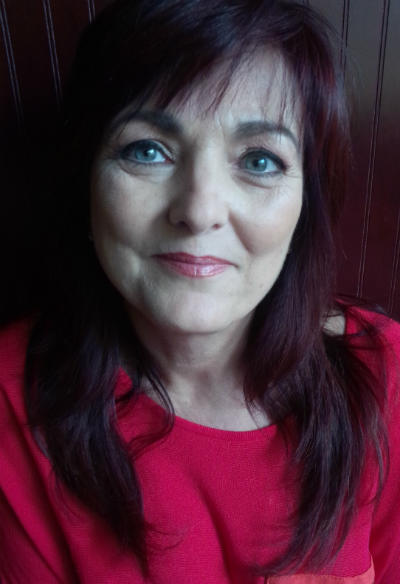
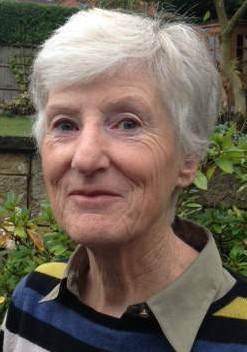 Geraldine Poirier Baiani (left) and Joan Rapaport report from New Brunswick. (931 words)
Geraldine Poirier Baiani (left) and Joan Rapaport report from New Brunswick. (931 words)





